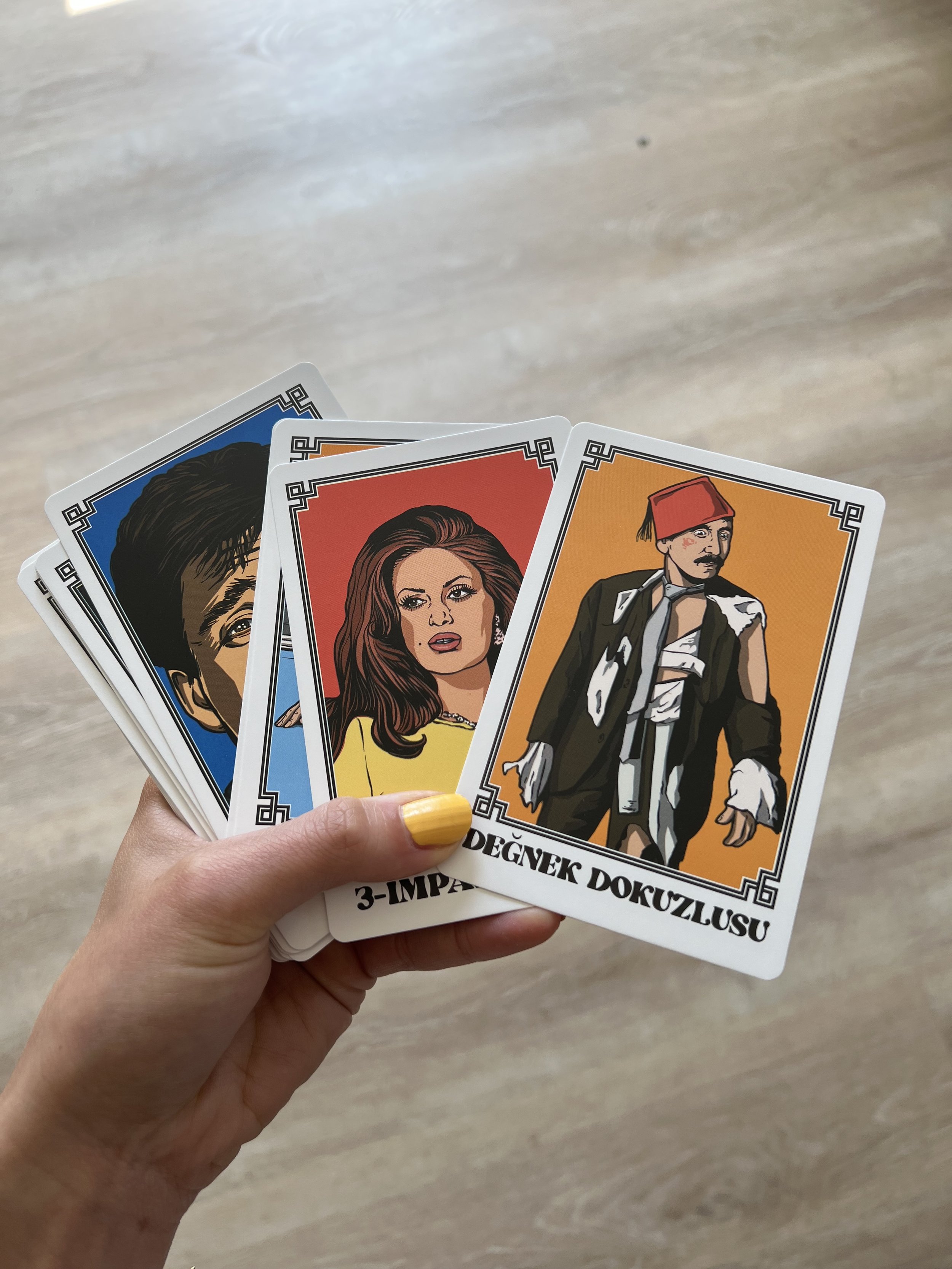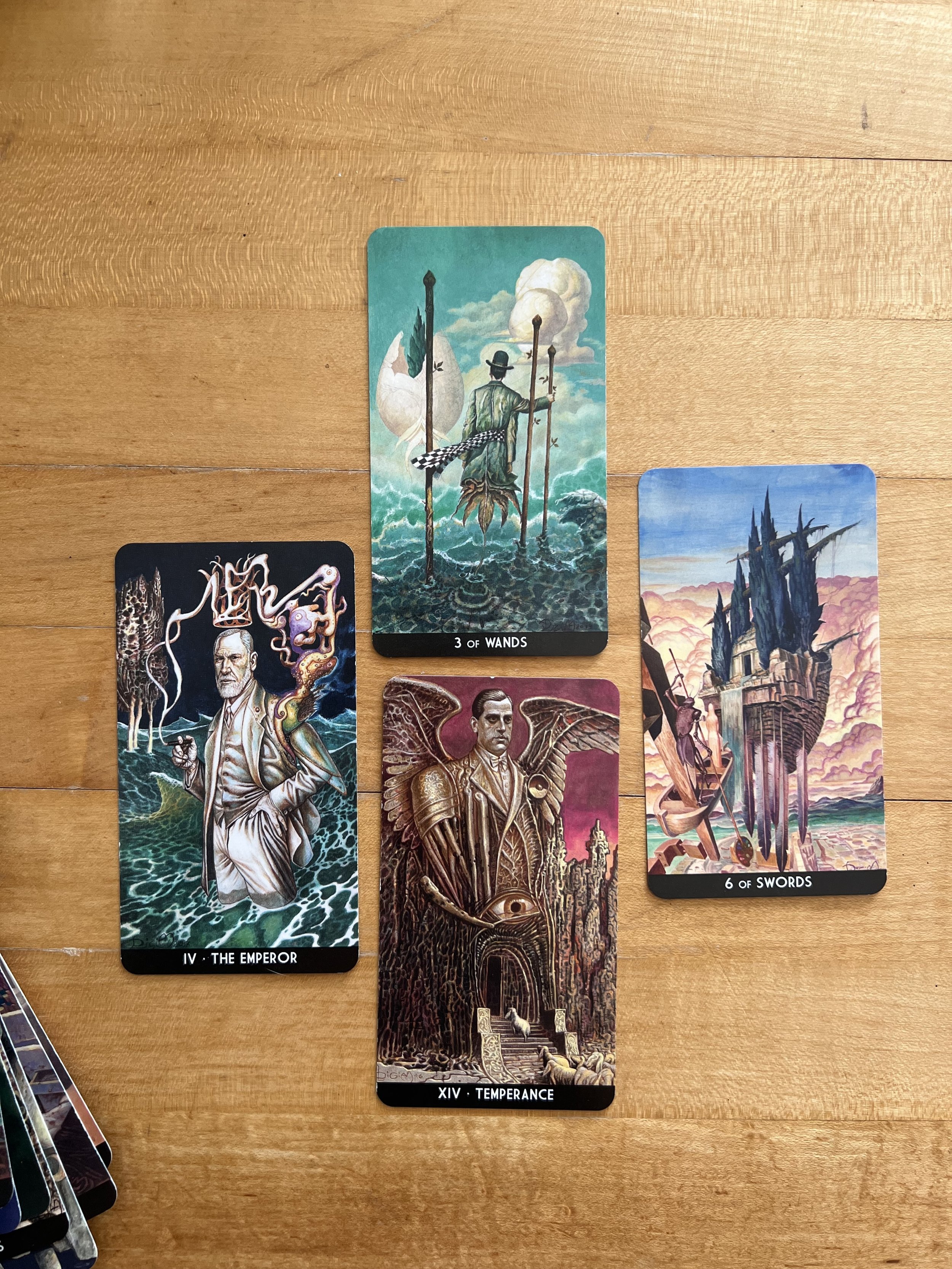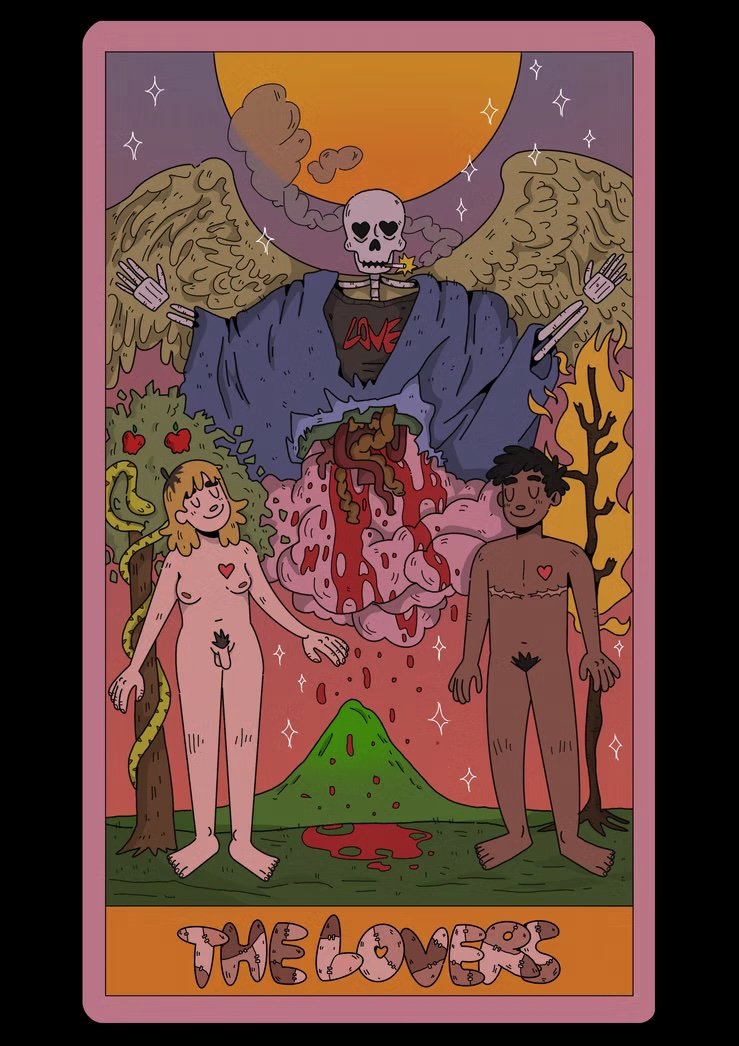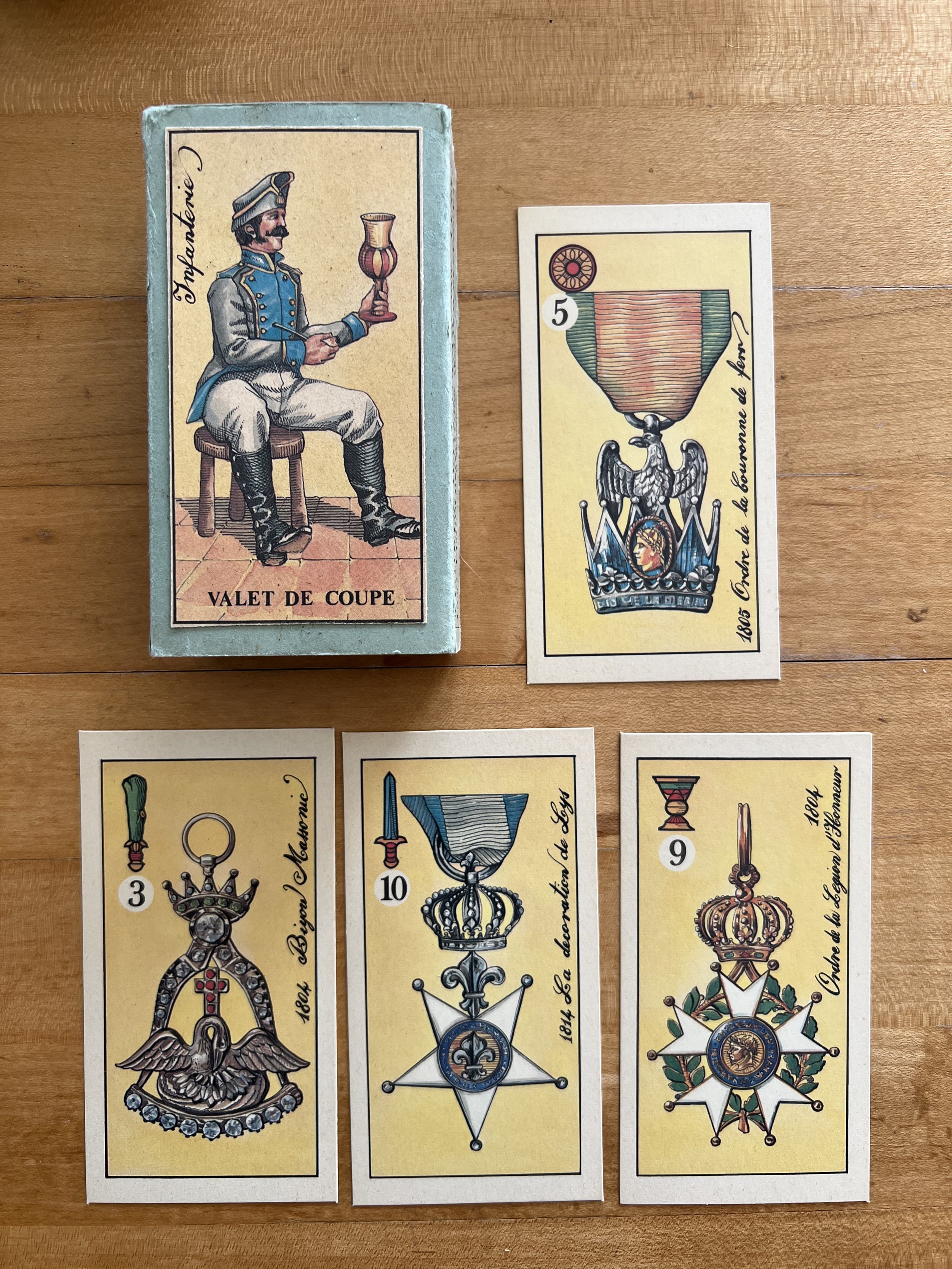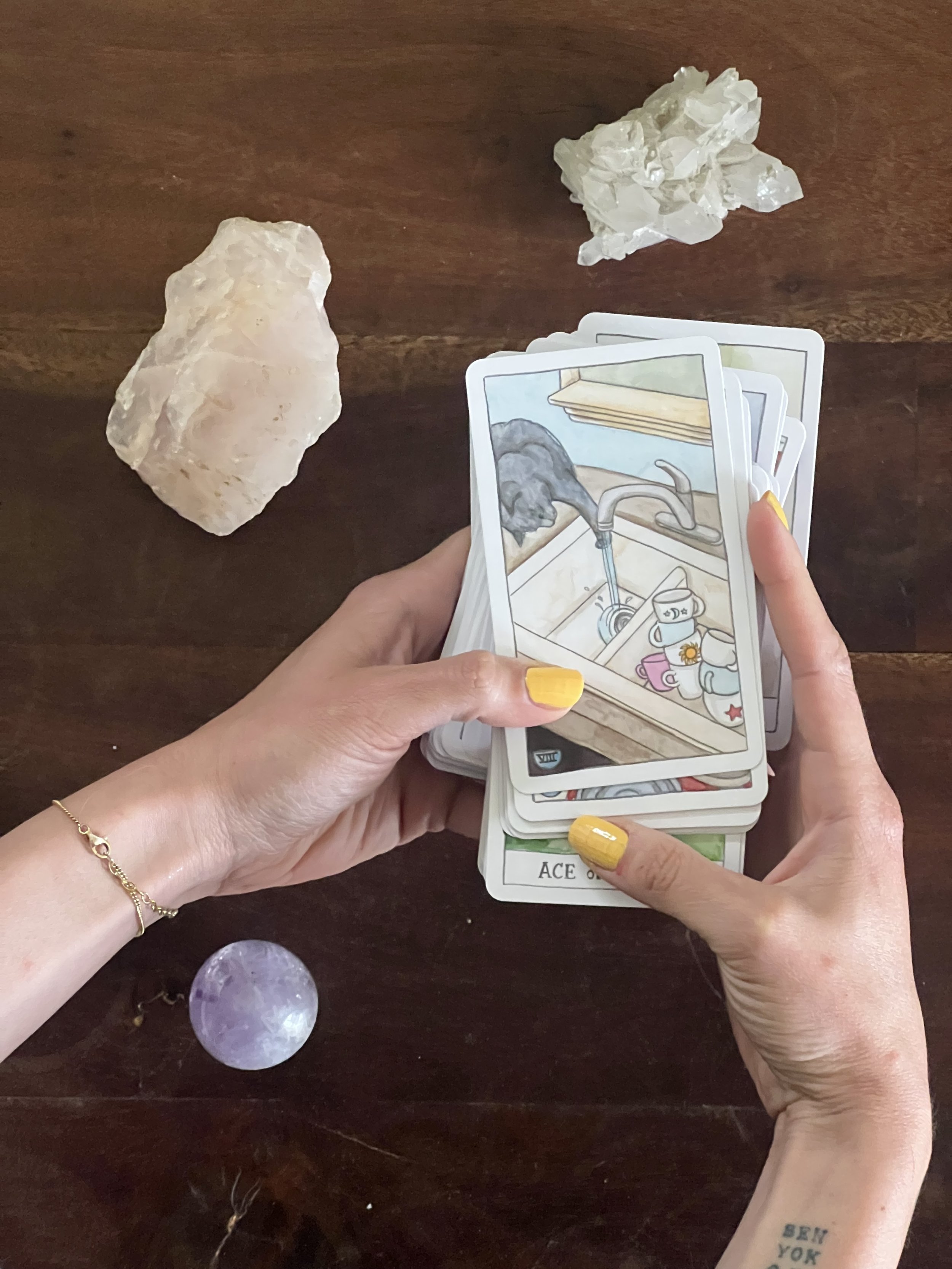So You Want to Make a Tarot Deck: A Practical, Honest, No-Fluff Guide
Creating your own tarot deck can feel like an enchanting idea — until you sit down and realize you have to draw 78 individual cards, plus a cover design, a box, maybe a guidebook… and oh yeah, actually understand tarot. The good news is that you don’t have to figure it all out at once. But you do have to start with clarity, intention, and patience. And, it can end up being your most rewarding project yet.
This guide is for artists, designers, and tarot lovers who are curious about creating their own deck — especially if you’re considering selling or self-publishing it one day (let’s chat about selling it on DAB Print Shop!).
It’s full of examples from the gazillion tarot decks I have, and what I love about them and what gets confusing.
This article a no-gatekeeping, honest walkthrough of what it actually takes to make a tarot deck you’ll be proud of (and that readers will love to use).
1. Know Your “Why”
Before you open Procreate, take a pause and ask yourself: Why am I doing this?
Your “why” sets the tone for your entire deck — whether it’s a personal creative challenge, an homage to your culture, a tool to help others learn, or an expressive outlet. Maybe you want to sell it. Maybe you want to understand tarot better. If it’s the former, you’ll need to do a research about which decks sell the most and why. If it’s the latter, you’re going to get vulnerable and dig deep into what each card represents for you. I assume it will be a combination of both, so you’ll find a sweet balance between the two.
Whatever your “why” is, define it in one or two short, clear sentences. If your explanation gets too long, it likely means your intention still needs refining. This will be your north star whenever you get overwhelmed or feel lost throughout the process.
Think of it like a design brief: without it, the project loses direction fast.
Designing a tarot deck can feel a bit like keeping a dream journal: revealing, intimate, and very personal. If you’re going for a highly symbolic or emotional deck, get ready to feel a little exposed. But that’s part of the magic — when your cards reflect your own experiences and emotions, they become tools not just for others, but for your own reflection too.
2. Research, Research, Research
This step is non-negotiable. A tarot deck is not just a series of illustrations; it’s a visual language based in symbolism and archetypes. Even if you’ve been reading tarot for years, revisit the fundamentals:
Read multiple guidebooks.
Make your own list of tarot card meanings and keywords.
Watch professional readers on YouTube to learn how they read cards and interpret spreads.
Study your favorite decks and analyze how different artists interpret the same card.
Learn how the Major and Minor Arcana function differently, and what the four suits represent.
Practice reading regularly even if it’s just for yourself.
Most artists begin by studying the Rider-Waite-Smith deck. It’s kind of the OG of modern tarot, and for good reason — it’s full of symbolic detail (like hats, wavy seas, flowers etc.) that gives each card layers of meaning. Even if your final design ends up looking nothing like it, understanding the original structure and imagery will give you a solid foundation.
Some decks stick closely to Rider-Waite’s format but adapt the characters and aesthetics. The Modern Witch Tarot, for example, is almost a one-to-one recreation of the Rider-Waite deck but reimagined with femme, modern witches. It keeps the symbolic integrity intact while updating the visuals to feel more inclusive and relevant.
3. Choose a Clear Concept
Saying “I want to make a tarot deck” is too broad. Narrow it down to a concept. This could be thematic (like 1970s Turkish movies), stylistic (like surreal collage), or symbolic (a deck centered around cats).
When designing your own deck, think less about what’s “supposed” to be on the card and more about what the card feels like to you. What symbols reflect that meaning in your own visual language?
I have a surrealist deck that does this beautifully — it pulls together elements from Dali, Magritte, and other surrealist icons to create a dreamlike take on the traditional structure. The meanings are there, but they’re approached more through mood than through exact illustration.
Your theme should mean something to you, not just sound trendy. You're going to be working on this for months and maybe years, so choose something you’ll love enough to see through.
For example, Bea Varela’s tarot reimagines the cards through LGBTQ+ narratives. Stacie Ant’s poolside tarot is a pastel, sun-drenched dream.
Stacie Ant’s Tarot Deck
Bea Varela’s Tarot Deck
Think about the feeling you’d like to evoke. A more abstract or symbolic deck will require more interpretation — and for some readers, that’s exactly the point.
4. Pick a Medium and Stick With It
Whether you’re a collage artist, an illustrator, a photographer, or a painter, choose a visual style and commit to it. Your deck should look and feel like a unified body of work.
That doesn’t mean you can’t experiment, but set parameters. Think about what’s realistic for you to finish. If you’re working full-time and trying to illustrate 78 unique cards, you might be setting yourself up for burnout.
Consistency is key, always. You’ll want a design system that ties it all together, like color palette, layout, typography, as well as the theme or style.
5. Make Sure It’s Readable
Designing for tarot is different than designing for, say, a gallery wall. Remember, the whole point is for people to actually use your cards. That means:
Make sure your symbolism is clear, even if it’s abstract.
ex. I love my cat tarot deck because it’s adorable, but it’s sometimes hard to figure out what each card is because the suits and the numbers are not always very clear.Avoid visual clutter that could distract from the meaning.
ex. This old Turkish movies-themed deck holds a very special place in my heart because those are the movies I grew up watching (even though I was born in the 90s) but it often feels like they just depicted some cards with movies that don’t necessarily hold the message or the meaning of the card.Test your design choices by laying out cards in common spreads (3-card, Celtic Cross, etc.) and seeing how they work in sequence.
6. Consider Time-Saving Options for the Minor Arcana
Let’s be real: designing 78 cards is a big project. One way to make it more manageable is to create a single design for each suit in the Minor Arcana (Cups, Wands, Swords, Pentacles) and just change the number or element at the top.
There’s a really special deck I own like that — it’s clean, simple, and super cool. My father-in-law found it in an antique store a decade ago. He didn’t know who it would be for, but bought it anyway. When he met me, he just knew.
And, because I know all the meanings by heart, I don’t need detailed illustrations. But if you’re designing for people who don’t have them memorized, you may want to stylize each card individually. Visual cues help readers intuitively connect with the meanings, especially when they’re still learning.
7. The Final (and Most Dreaded) Step: Start Creating; One Card at a Time
You’ve done the prep. Now comes the part everyone looks forward to… and dreads.
Start with a handful of cards; not all 78. See how it feels. Share your work with others (both tarot readers and non-readers). Be open to feedback, but also protect your vision. It’s okay to take breaks. It’s okay to get stuck. Just keep going.
At this point you might decide that instead of a traditional tarot deck you might just create an oracle deck – that’s also great! These steps will work for that, too. You’ll worry less about traditional teachings and focus more on personal lessons to have a complete set of cards.
It’s Time to Publish Your Tarot Deck!
Once you’ve finished your first draft of the artwork, print a test deck. This can be a DIY version on your home printer or a one-off from a local print shop.
Why test? Because:
You need to check cropping and bleed areas.
You want to see how your artwork holds up at card size.
You’ll catch things in print that you missed on-screen.
This version is your working prototype. Carry it with you. Use it. Let others read with it. Note what works and what doesn’t.
If your goal is just to make a personal deck, you can stop here and enjoy the fruit of your labor.
But if you’re thinking about selling your deck:
Study the market. Which decks are doing well? What price points are common?
Gauge interest. Are people excited about your deck? Have you tested with your audience?
Start small. A modest first print run (10–50 decks) can help you troubleshoot before you commit to a big order.
Creating a tarot deck is a major creative feat. Seriously — few projects require this much personal, artistic, and spiritual investment. Take time to celebrate. And stay curious. Every deck you read or create teaches you something new. Who knows? Maybe yours will end up on the shelves of someone else's favorite shop, inspiring their journey — just like the decks that inspired yours.
FAQs
Can I draw tarot for myself?
Yes, absolutely! Tarot readers know that a card can have multiple meanings, and whenever I’m reading for myself I discover how I truly feel about things. For example, if I ask “What should I do about my failing art business?” and draw “Ace of Wands,” I can interpret it two ways. One, is that my art is my main passion and what lights me up; so keep going. Two, a new passion awaits if I were to let this go. Depending on which way I’m inclined to read my cards, I understand how I actually feel about this issue.
Are tarot card designs copyrighted?
Yes, most modern tarot decks are protected by copyright. This includes the artwork, layout, and sometimes even the guidebook text. However, older decks like the Rider-Waite-Smith are in the public domain, which means you can reinterpret the symbolism freely. Just be sure to double-check the copyright status before using or modifying any designs.
Can I create tarot cards on Canva?
Yes, you can! Canva has templates and design tools that make it easy to create your own tarot cards even if you're not a professional designer. If you plan to sell your deck, check Canva’s licensing terms, especially for commercial use of elements like illustrations or fonts.
Can you make up your own tarot spreads?
Definitely. Tarot spreads are just structured ways of asking questions. Creating your own spreads can make readings more personal and relevant. You can even design spreads to match your deck’s themes or your creative process.
What to write on homemade tarot cards
It’s up to you! You can keep it simple with just the name of the card (like “The Fool” or “Three of Cups”), or add keywords, meanings, or even your own affirmations. Some artists like to include a phrase or mantra that captures the card’s energy.
Tarot Cards Meaning
Here's a concise overview of the meanings associated with each tarot card. Remember that different sources might interpret each card a little differently, but they should give more or less the same idea:
Major Arcana
The Fool: New beginnings, spontaneity, and taking a leap of faith.
The Magician: Manifestation, resourcefulness, and inspired action.
The High Priestess: Intuition, sacred knowledge, and divine feminine.
The Empress: Abundance, nurturing, and fertility.
The Emperor: Authority, structure, and solid foundation.
The Hierophant: Spiritual wisdom, tradition, and conformity.
The Lovers: Love, harmony, and partnerships.
The Chariot: Control, willpower, and determination.
Strength: Courage, persuasion, and inner strength.
The Hermit: Introspection, soul-searching, and inner guidance.
Wheel of Fortune: Good luck, karma, and life cycles.
Justice: Fairness, truth, and law.
The Hanged Man: Pause, surrender, and letting go.
Death: Endings, transformation, and transition.
Temperance: Balance, moderation, and patience.
The Devil: Shadow self, attachment, and restriction.
The Tower: Sudden upheaval, chaos, and revelation.
The Star: Hope, faith, and purpose.
The Moon: Illusion, secrets, and the unknown.
The Sun: Positivity, revelation, and success.
Judgment: Reflection, reckoning, and awakening.
The World: Completion, integration, and accomplishment.
Minor Arcana
Suit of Wands (Element: Fire; Themes: Inspiration, creativity, and action)
Ace of Wands: Inspiration and new opportunities.
Two of Wands: Planning and making decisions.
Three of Wands: Expansion and foresight.
Four of Wands: Celebration and harmony.
Five of Wands: Conflict and competition.
Six of Wands: Success and public recognition.
Seven of Wands: Defense and perseverance.
Eight of Wands: Rapid action and movement.
Nine of Wands: Resilience and courage.
Ten of Wands: Burden and responsibility.
Page of Wands: Exploration and enthusiasm.
Knight of Wands: Energy and passion.
Queen of Wands: Confidence and determination.
King of Wands: Leadership and vision.
Suit of Cups (Element: Water; Themes: Emotions, relationships, and intuition)
Ace of Cups: New relationships and compassion.
Two of Cups: Partnership and unity.
Three of Cups: Celebration and friendship.
Four of Cups: Apathy and contemplation.
Five of Cups: Loss and grief.
Six of Cups: Nostalgia and innocence.
Seven of Cups: Choices and illusions.
Eight of Cups: Disappointment and withdrawal.
Nine of Cups: Contentment and satisfaction.
Ten of Cups: Harmony and happiness.
Page of Cups: Creativity and intuition.
Knight of Cups: Romance and charm.
Queen of Cups: Compassion and calm.
King of Cups: Emotional balance and control.
Suit of Swords (Element: Air; Themes: Intellect, conflict, and communication)
Ace of Swords: Breakthroughs and clarity.
Two of Swords: Indecision and stalemate.
Three of Swords: Heartbreak and sorrow.
Four of Swords: Rest and recovery.
Five of Swords: Conflict and defeat.
Six of Swords: Transition and moving on.
Seven of Swords: Deception and strategy.
Eight of Swords: Restriction and imprisonment.
Nine of Swords: Anxiety and nightmares.
Ten of Swords: End and loss.
Page of Swords: Curiosity and mental energy.
Knight of Swords: Ambition and action.
Queen of Swords: Clarity and independence.
King of Swords: Intellect and authority.
Suit of Pentacles (Element: Earth; Themes: Career, money, stability, and the material world)
Ace of Pentacles: New financial or career opportunities.
Two of Pentacles: Balance and adaptability.
Three of Pentacles: Collaboration and working toward shared goals.
Four of Pentacles: Possessiveness or fear of loss.
Five of Pentacles: Hardship or financial struggle.
Six of Pentacles: Generosity and fairness in relationships.
Seven of Pentacles: Patience and long-term vision.
Eight of Pentacles: Diligence and consistent effort in your craft or work.
Nine of Pentacles: Independence, self-sufficiency, and enjoying the fruits of your labor.
Ten of Pentacles: Legacy, long-term wealth, and family stability.
Page of Pentacles: New opportunities or laying the groundwork for a project or goal.
Knight of Pentacles: Hard work, responsibility, and a methodical, reliable approach.
Queen of Pentacles: Nurturing, practicality, and creating comfort or abundance at home and in life.
King of Pentacles: Success, leadership, and wise management of resources and finances.






